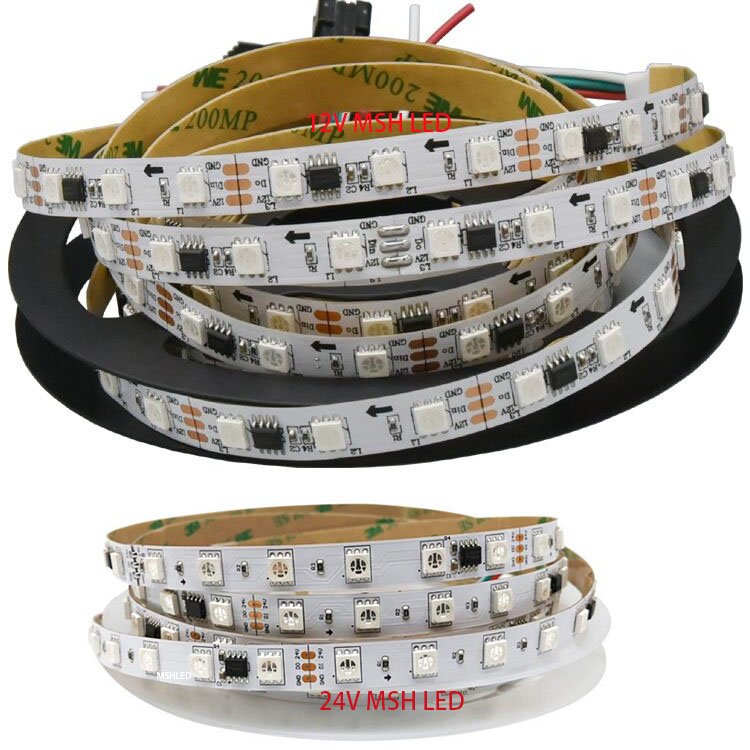LED strips are a great way to add a lot of light and color to a project in a fun and cost-effective way. You’ll learn about the many sorts of strips and how to connect them to an Intel Edison using an Arduino breakout board in this Instructable.
To begin, solder the wires to the light strip. If you don’t buy a full 5-meter roll of LED strips at once, you’ll get a larger quantity of strips that have been cut off and don’t have the leads attached. Soldering is straightforward; all you have to do is make sure the wires are connected to the correct side of the ribbon. At either end, there will be a set of four contacts, but the two contacts in the middle of one end will be labeled “DI” and “CI,” while the two contacts in the middle of the other end will be marked “DO” and “CO.” The “I” side (short for “In”) is the one you desire.
Because the connections are brittle at this point, I recommend using heat shrink tubing or electrical tape to reinforce and insulate them.
The LED strips should then be connected to the Arduino and the power source. The “DI” and “CI” (Data In and Clock In) wires are connected to the Arduino’s two digital pins, while the other two are connected to the power supply and power source, as well as the Arduino’s common ground. Check out Adafruit’s great tutorial for a more in-depth look at wiring addressable LED strips.
Finally, you’ll need to submit the program to Arduino via your computer so that it can execute it using the LEDs. You’ll need the Arduino IDE (along with the Arduino USB driver) and a library to control the chip on the LED strip for this. This library is accessible for the individual strip I purchased.
I won’t go into detail about how Arduino works or how to utilize it because that will be covered in a subsequent guide. For the time being, I’d just like to point you that you can program the Arduino by writing a simple C program that specifies which LEDs should light up and when. It’s still being coded, so don’t be alarmed if that makes you nervous; nonetheless, controlling the LEDs is as simple as programming in C, and you can learn everything you need to know in just a few hours.
I added two buttons to the Arduino for my project and built a simple software that cycles through three modes (stationary light, slow “bounce,” and carnival mode) and various different color selections with the second button. I got some ordinary 3M double-sided mounting tape and applied it to the Arduino and LED strips to mount the backlight to the TV. I put the whole thing to the back of the TV, and now any movie or carnival can generate lovely mood lighting.






